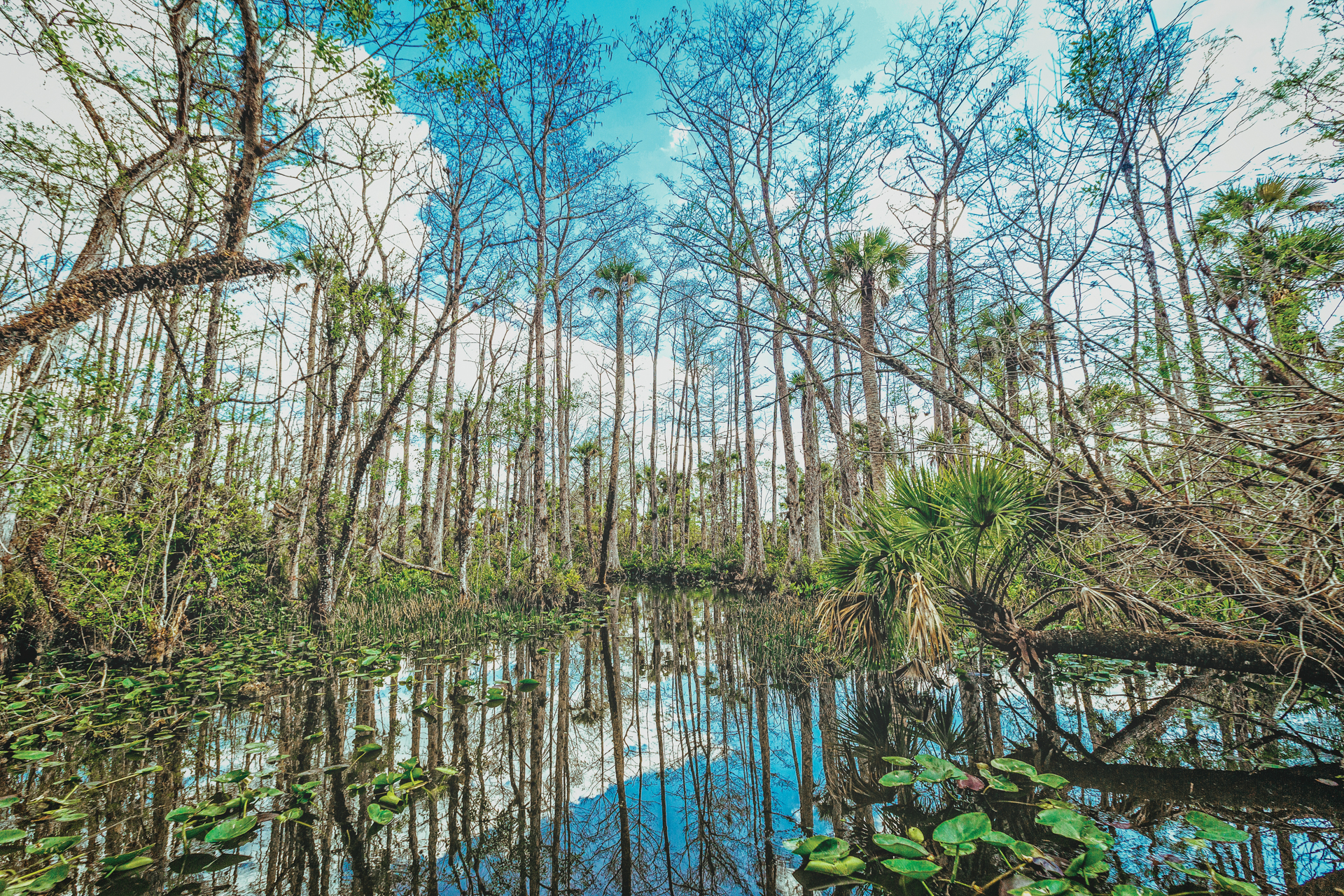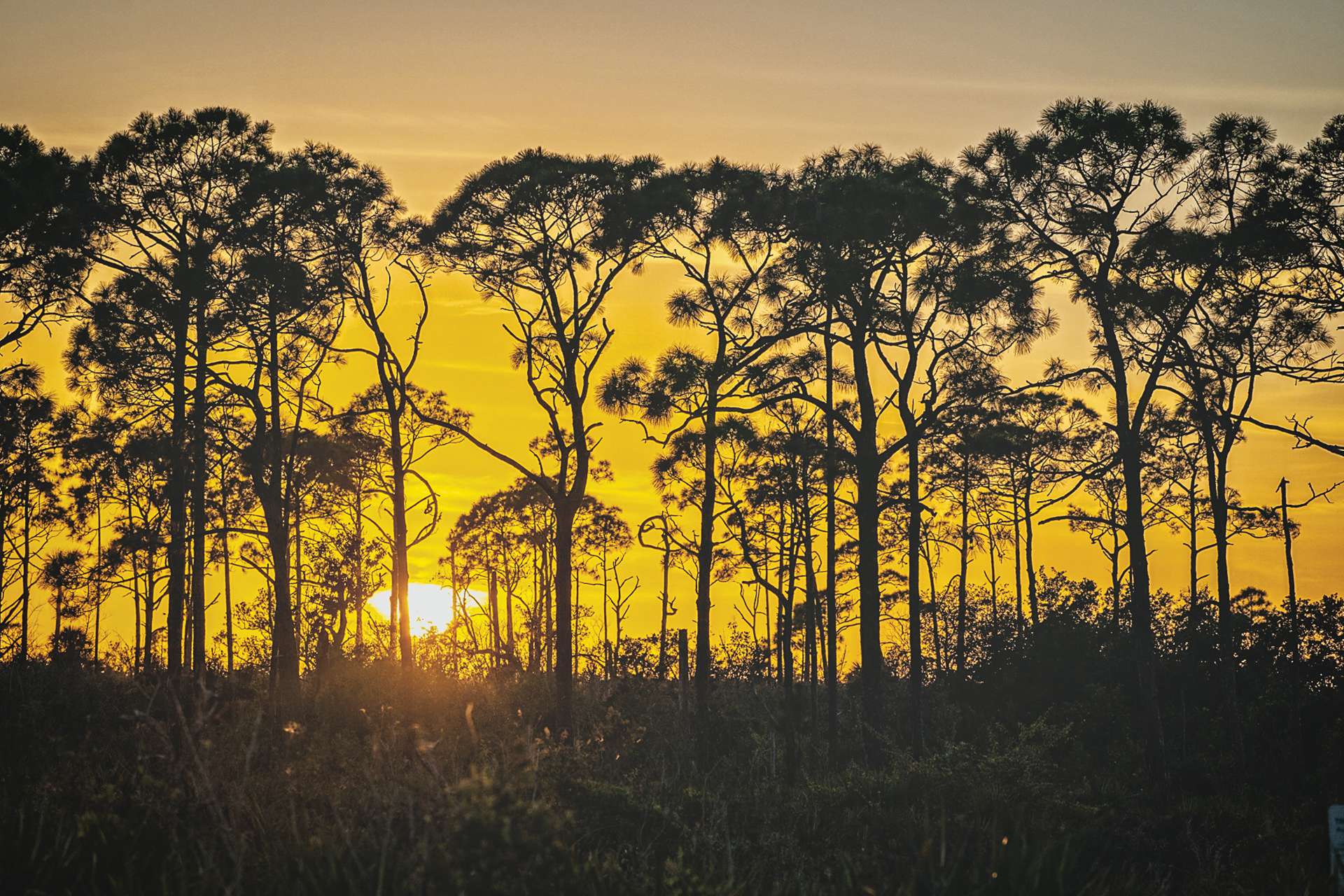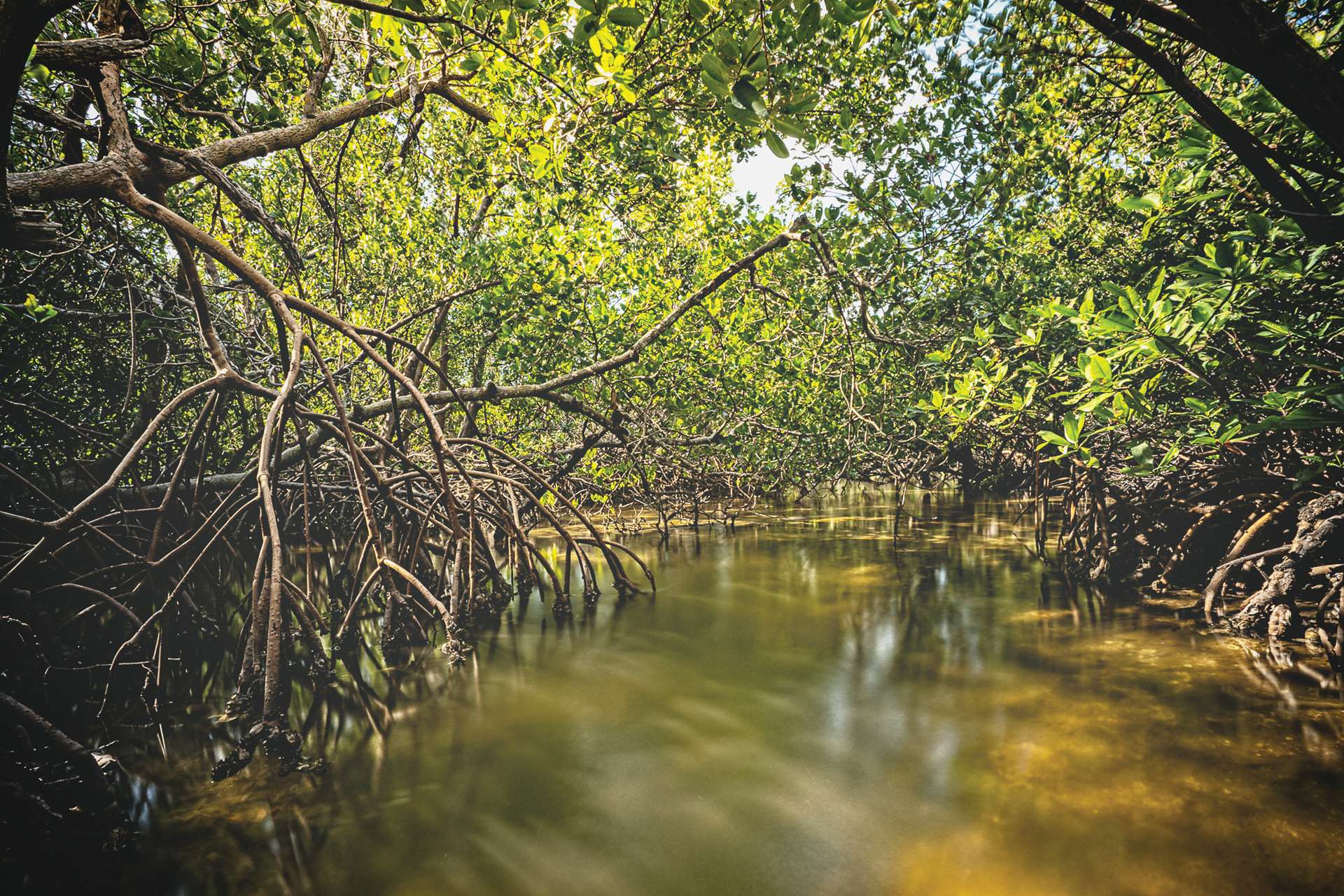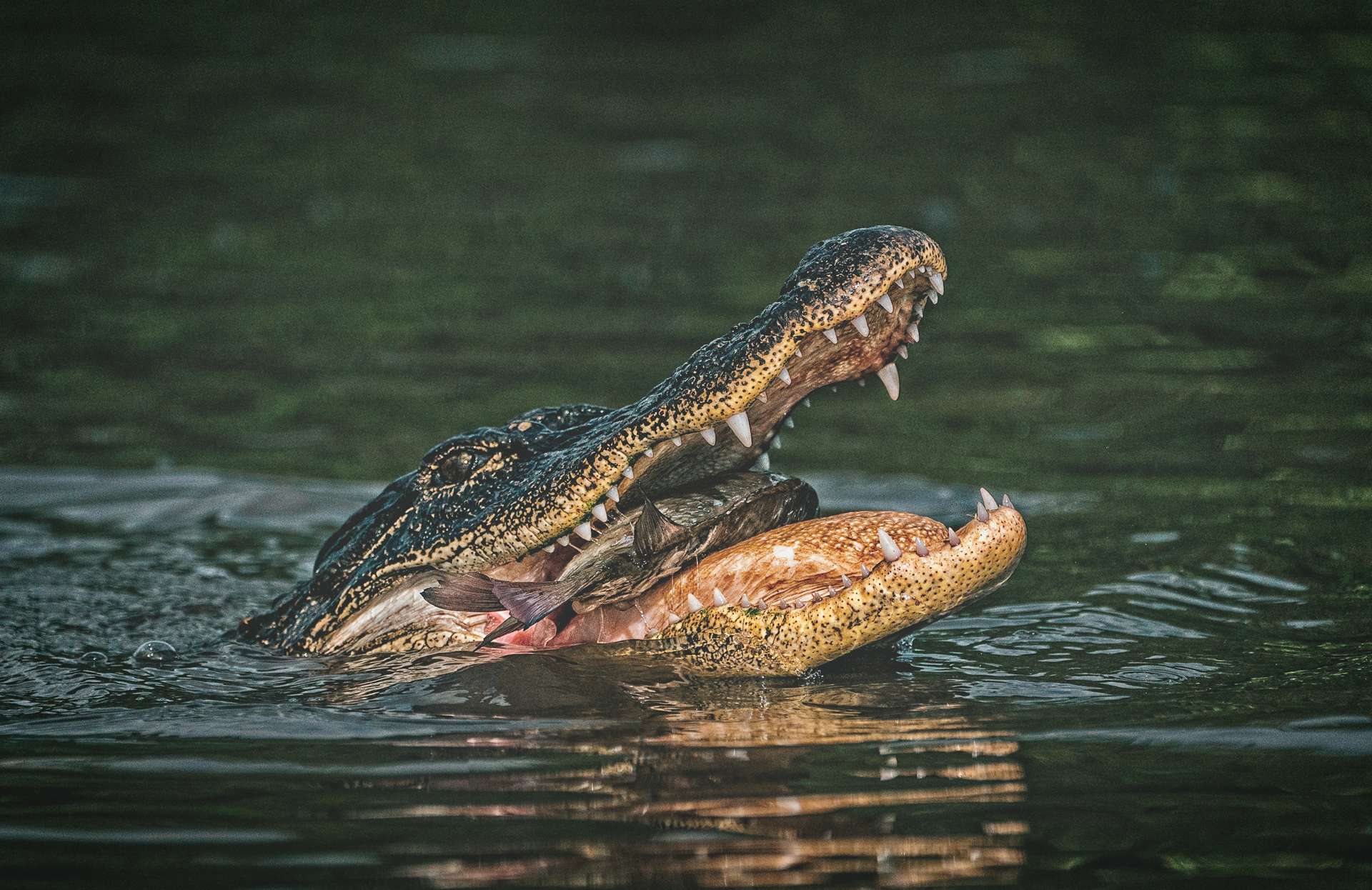Joint efforts by conservationists, government leaders and the Miccosukee Tribe could put a stop to oil drilling in Big Cypress National Preserve once and for all, effectively ending a piecemeal effort over several decades to halt the legal yet contested mining of natural resources in one of the state’s crucial wildlife habitats.
The latest threat, according to those who oppose the drilling, are permits filed by Burnett Oil Company, a privately owned Texas-based oil and gas company founded in 1981, to explore drilling in a 110-square-mile area of the preserve.
It’s the first major effort to drill in Big Cypress since the preserve was created in 1974. At that time, the federal government had enough money and wherewithal to buy surface rights for the area from the Collier family, but the deal to purchase mineral rights fell through. That means drilling in the area is still fair game, should the state approve permits.
In the meantime, conservation groups and the U.S. Department of the Interior are surveying the area to come up with a fair price for the mineral rights in an attempt to broker a deal between Collier Resources Company and the federal government over the next year.
If mineral rights are secured by the government, there would be no need to resist oil drilling propositions piecemeal the way the situation stands now.
“It’s like Whac-A-Mole,” says Jaclyn Lopez, assistant professor of law at Stetson University and the former Florida director for the Center for Biological Diversity. “Even if this kind of goes away, 10 years from now the threat could be present again.”
Instead, the hope is that negotiations between the Collier family and a group called WildLandscapes International could put an end to this decades-long struggle.
“Ideally, the federal government would resolve the mineral rights issue by either buying them out or in some other way exercising authority to confirm the space will never be open to oil drilling,” Lopez says.
 History of Big Cypress
History of Big Cypress
Big Cypress National Park was established in 1974, comprising about 729,000 acres of swampland in the Everglades. Oil exploration has been permitted since, but efforts were made over the years to end that activity.
Efforts began in the 1990s to estimate the cost of the mineral rights in the area, with the goal of purchasing those rights from the owners.
Finally, in 2002, an agreement was reached to purchase the mineral rights from Collier Resources Companies for $120 million. The following year, a report was issued showing that CRC bluffed in their negotiations with the Department of Interior, inflating the price of those mineral rights. The same report said the government failed to listen to its own experts when calculating the price. At that point, the deal was called off and government officials said purchasing the mineral rights for that amount would be unfair to taxpayers.
The issue was put to rest for a time, but Burnett Oil filed permits for additional drilling and exploration in recent years, effectively leasing the land from the Colliers and reigniting the goal to purchase mineral rights.
At first, Burnett Oil wanted to explore about 400 square miles of area. “The Park Service said, ‘That’s too big, can you please break it up into smaller chunks because we’ve never done anything like this here?’ And so, Burnett broke it into four chunks,” Lopez says.
The first permit was approved, and exploration took place in 2016 and 2017; Burnett Oil used garbage-truck-sized vehicles to explore the area. “These are multiton trucks with really large tires,” Lopez says.
Lopez said the results of Burnett Oil’s exploration were never released, but the company filed to drill for that area. Then in 2020, pending projects from the Army Corps of Engineers were transferred to the Florida Department of Environmental Protection under the State 404 Program. It is now up to the state of Florida to approve permits for drilling in Big Cypress.
Burnett Oil’s application to drill was withdrawn after the state advised it to regroup, warning that its application didn’t sufficiently address the effects to the area or demonstrate the public benefit and would be rejected. Burnett Oil has not refiled since.
But permanent damage has already been done by some of the exploration Burnett Oil performed years ago, Lopez said.
“You can go through there now and still see the legacy of the seismic survey because there’s these 9- to 15-foot-wide, 100-mile-long seismic trails that were carved into the swamp,” she says.
 The negotiations
The negotiations
When the newest proposal arose in recent years, a group called WildLandscapes International got involved, working to reach a deal with the Colliers to purchase the mineral rights for 317,436 acres across the preserve and the Florida Panther National Wildlife Refuge so that the federal government could later come up with the money to pay for the mineral rights in installments.
The rights likely would be purchased with money from a land and water conservation trust funded by the oil industry under the recently passed Great American Outdoors Act, which funds the Land and Water Conservation Fund up to $900 million a year using earnings from offshore drilling companies.
David Houghton, director for WildLandscapes International, said the organization is stepping in to do the expensive work of all the due diligence required to estimate a fair market price for the mineral rights. Once the work is done—Houghton estimates it will take up to 18 months—the information can be used to seal a deal between the Colliers and the government.
“We’re not working on behalf of the Colliers. We’re not working on behalf of the United States. We’re just trying to make this happen,” Houghton says. “Because our mission is to try to protect panthers, orchids, hunting, fishing, all that kind of stuff that big pieces of public land offer.”
In the meantime, Houghton said Burnett Oil likely will be waiting in the wings to file for drilling permits should a deal fall through again. Still, he said he’s optimistic.
“It’s going to be a big process and then, whatever the fair market value is, it’s probably going to be a fairly significant number. And so, people above my pay grade are going to have to figure out whether that’s attainable,” he says. “So yeah, we’ve got some challenges in front of us, but I’m hopeful about it. I don’t think I’d take probably five years of my life to do it if I wasn’t.”
Curtis Osceola, chief of staff for the Miccosukee Tribe, has been working with Houghton and said his tribe is concerned about the damage drilling would do to the area, which is home to a unique array of plants and animals, including the Florida panther, the ghost orchid and 39 species of animals listed as threatened or endangered. Further, the area is part of his tribe’s history.
“We don’t think it (drilling) belongs in what we consider sacred land,” he says.
The area is a continued source for herbs used for medicinal, cultural and religious purposes, and it also remains a burial ground for its people. Historically, the land was crucial to the tribe’s survival.
“The Big Cypress and Everglades ecosystem, at large, we look at as our mother, and the reason why is when we were being removed and hunted by the federal government, the Everglades, palm hammocks and tree islands, these were our safe havens,” Osceola says. “We were able to survive and subsist and sustain our sovereignty against the incursion of the United States.”
When the tribe established its constitution, they made it a legal obligation to preserve the land, taking it beyond a long-held religious tenet to protect the area.
In the meantime, Osceola said, it’s a bipartisan issue that politicians are interested in solving. In April 2021, a handful of members of Congress signed a letter to the Department of the Interior and the National Park Service, condemning their efforts to move forward with an environmental assessment of Burnett Oil’s proposal.
Included in the letter was Congresswoman Debbie Wasserman Schultz, who has been trying to “close the circle,” as Osceola puts it, for years.
In June 2021, Wasserman Schultz, former Florida governor and then-Congressman Charlie Crist and others signed another letter to the U.S. Environmental Protection Agency expressing more concerns about Burnett Oil, saying: “The proposed oil development activities are not in the public’s interest,” and asking the EPA to step in and object to the company’s permits.
 What’s next
What’s next
Since reaching an agreement with the Colliers, WildLandscapes International has begun working with the National Parks Service within the U.S. Department of Interior to estimate the value of the Colliers’ mineral rights in Big Cypress. Osceola said it’s a delicate process given that the Colliers’ knowledge of mineral deposits in the area is largely considered a trade secret, so sharing between the entities is done with a lot of faith that until the deal is closed, that information will not be made public. Considerations would be made for the location of oil, as well as its accessibility. If $1 million worth of oil would cost $500,000 to access, it might not be considered viable, Osceola said.
“All of those determinations will be made over the next 6-8 months,” he adds.
At this point, Burnett does not have permission to drill for oil in Big Cypress. Should it reapply, Lopez said the permit could be rejected on the grounds that drilling would be detrimental to the purpose of the preserve. If that’s the case, the government can pay “just compensation” to the mineral rights owner and the government would then own both the surface and mineral rights.
Osceola said he’s been heartened to see widespread support for ending drilling in the area permanently.
“It’s definitely the one thing that everyone agrees on. It’s bipartisan; Republicans, Democrats,” he says. “It’s just been really surprising to see how unified the stakeholders have been—and so now it’s just getting the administration to take action by engaging with WildLandscapes and agreeing to this approach in the way we want to do it.”
Osceola said it could take up to two years to survey the land the Colliers own to determine what the mineral rights are worth. During that time, he pointed out, Burnett Oil could reapply to drill at any point. But in the meantime, the work spent determining what is owned and how much it’s worth is “legacy information” that won’t have to be obtained again, he said.
Burnett Oil and Collier Resources Company had not responded to a request for comment by the time of publication.
 The wildlife at stake
The wildlife at stake
The Florida Everglades is home to protected wildlife, including a substantial 39 native species considered federally threatened or endangered. Among them is the Florida Panther, one third of whose breeding habitat is encompassed within an area known as the Green Heart of the Everglades—which includes Big Cypress and the Florida Panther National Wildlife Refuge.
Florida’s official state marine mammal, the manatee, is federally listed as threatened. Manatees rely on healthy waterways connecting coastal waters to rivers and springs, making an annual migration each year in search of warmer waters.
And while alligators are common, the Everglades is also home to the American crocodile, a threatened species in Florida. The loss of nesting habitats due to coastal development poses a significant challenge to its long-term survival.
Wading birds, such as herons and egrets, have experienced dramatic declines over the years due to habitat degradation in the Everglades. As indicators of ecosystem health, their well-being is closely tied to the success of the Comprehensive Everglades Restoration Plan.
Considered the orchid capital of the U.S., the region supports 36 orchid species and 120 threatened and endangered plant species, including the elusive ghost orchid, one of the rarest in the world.
The health of the Big Cypress region not only supports native flora and fauna, it’s also the backbone of several key industries in the state. Wildlife viewing activities in Florida generated more than $4.9 billion for the state’s economy in 2011, supporting 44,623 full- and part-time jobs. Visitors flock to Marco Island and Naples, contributing $2.1 billion to the local economy.
The Everglades also plays a vital role in sustaining the fishing industry in Florida. Commercial stone crab claw fishing alone contributed $57.1 million in total output in 2016, supporting 106,000 jobs.
Source: WildLandscapes International





